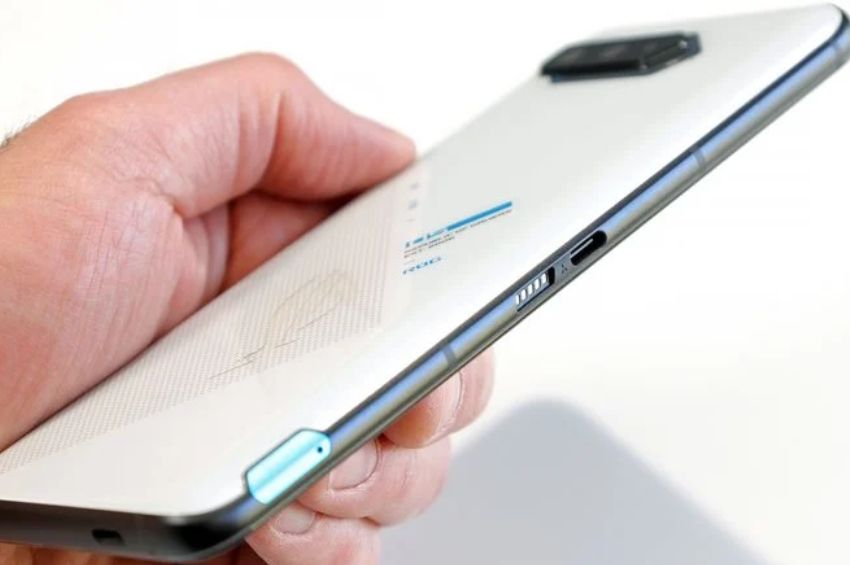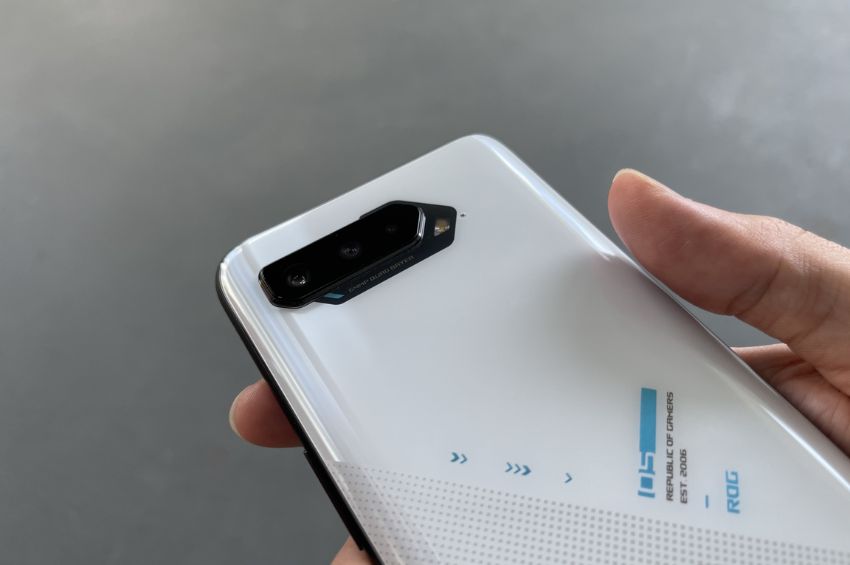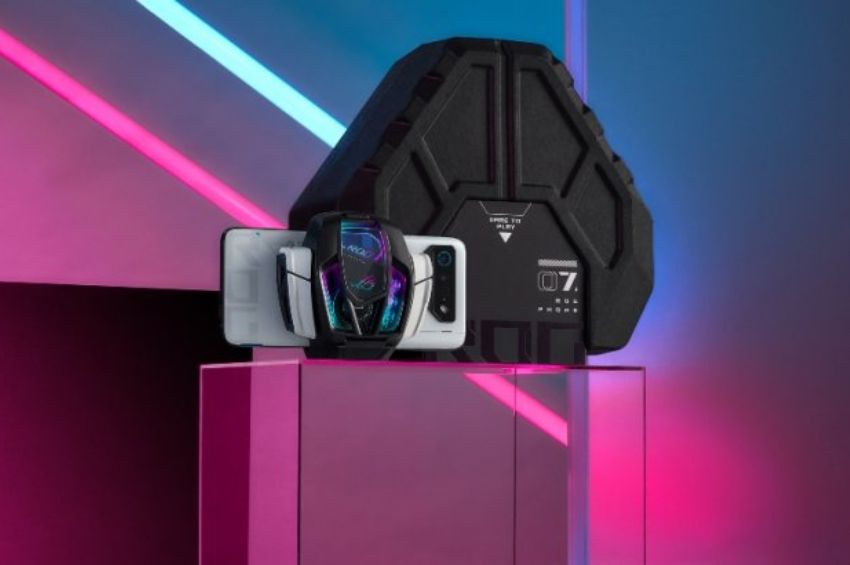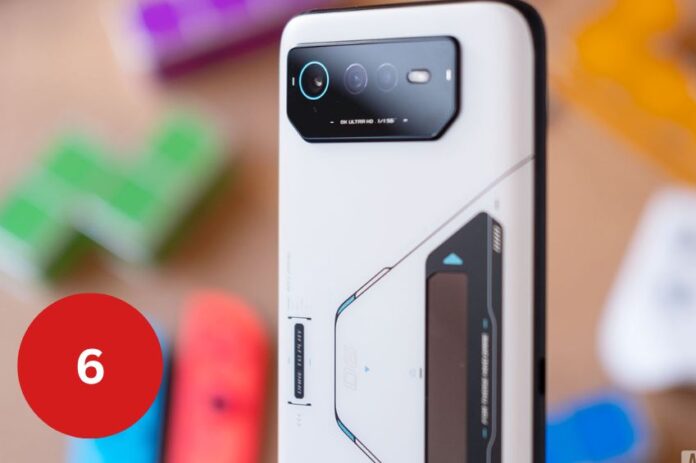With the new Asus ROG Phone 7 and 7 Ultimate, Asus seems dedicated to maintaining its gaming smartphone line. The revised lineup focuses more on just increasing specs to give gamers looking for a phone the extra power they desire rather than making significant changes to the previous generation. But striving for performance perfection and putting a heavy emphasis on gaming features doesn’t necessarily result in the finest smartphone. Given how much the ROG Phone 7 resembles the terrible ROG Phone 6 Pro, it will be difficult to avoid falling victim to the same fate as its predecessor.
Asus Rog Phone 7 Ultimate Caracteristicas



Design and Features
I initially believed there had been a mistake when I took the ROG Phone 7 Ultimate out of the packaging. I initially believed it to be the ROG Phone 6 Pro that I reviewed last year because of how strikingly identical it appeared. Although the style of the back cover has a few tiny variations, it is more similar than dissimilar from the phone from a year ago. The ROG Phone 7 Ultimate actually got a little bit more understated, with embellishments like the “ROG” lettering along the bottom border that practically blend in until the appropriate light hits them.
With its geometric camera hump and lines of artificial seams between panels, the phone’s back plays at being a robot. The lines are less prominent than they were on the ROG Phone 6 Pro. A POLED display, or tiny, pixelated screen, is still present on the ROG Phone 7 Ultimate’s back to show call notifications and different device health indications, like as battery life or active games. On the rear, Gorilla Glass 3 has a stunning pearly two-tone finish that perfectly frames all of these features. The ROG Phone 6’s Gorilla Glass Victus is used to cover the front of this phone as well. However, the ROG Phone 7 Ultimate receives a minor improvement in durability over the ROG Phone 6 with an IP54 classification to further defend against dust infiltration. But even so, it’s still a long way from the IP68 designation that many smartphones carry.

The ROG Phone 7 Ultimate has a distinctive slot on the rear that opens up to aid cooling by exposing heatsink fins on the processor, called the AeroActive Portal, which was first introduced with the ROG Phone 6D, despite having a poor IP54 rating. When the AeroActive Cooler 7 (a different device) is connected to the phone and pushing cool air via that fin stack, this feature operates. Although the Nubia Redmagic 6’s venting was more spectacular, that phone didn’t need a separate device to facilitate air cooling. The Portal only functions with the more recent AeroActive Cooler model, even though the ROG Phone 7 Ultimate still supports the older AeroActive Cooler 6.

The peculiar design is not limited to the rear. A USB-C connector and two pogo pin pads may be seen on the left edge of the phone. The USB port also allows charging and accessory connections, which don’t interfere with holding the phone comfortably while gaming. The combo is designed for use with the AeroActive Cooler. On the bottom of the phone are a USB-C port and headphone jack as well. The ROG Phone 7 Ultimate actually moves the charging port from the center of the design, where it is typically located, to the side. I don’t see how this is advantageous to the user, as it implies that third-party controller add-ons like the original Razer Kishi might not function. The side-mounted port offers speedier connectivity and DisplayPort 1.4 output, thus the two USB-C ports aren’t entirely equal.
However, it’s possible that no external controller is required. Two touch-sensitive trigger zones on the phone’s right edge can be assigned to on-screen controls. It’s a useful function that I’ve used on other phones, but I like it when the buttons are actual physical buttons, like the ones on Black Shark phones. There are four buttons on the AeroActive Cooler 7 accessory as well, but I didn’t find the hand grip necessary to use them (with or without the phone’s shoulder buttons) to be particularly comfortable.
The ROG Phone 7 Ultimate is bigger than my Pixel 7 Pro in a case since it fits a 6.78-inch display and has thicker top and bottom bezels. Since the selfie camera is cleverly separated from the rest of the device’s bezel at the top, no portion of the display is obscured by a hole-punch camera. The weight of the phone is related to its size. It weighs the same as its predecessor at 239 grams, making it substantial. I found it uncomfortable to hold the phone up for an hour while watching a movie.
One positive is the display. Due to its size and 2448 x 1080 resolution, it is incredibly sharp. Additionally, the panel is a brilliant AMOLED that excels at displaying HDR content. It can play games smoothly because to its 165Hz refresh rate, and its front-facing speakers produce superb audio for a phone. Like many other Android manufacturers, Asus inserted a fingerprint sensor beneath the display, and it works quickly to unlock the phone.
Asus Rog Phone 7 Ultimate Software

You might assume a gaming gadget will be crammed with unnecessary gaming apps and a garish user interface, but Asus has avoided that trap. The Armoury Crate app, which is essential to getting more performance and gaming capabilities out of this phone, is the only additional software that comes pre-installed on the device. The phone runs Android 13 out of the box. Without those features, there wouldn’t be much of an incentive to buy this phone, thus Armoury Crate is absolutely acceptable in this situation. Additionally, while Asus offers a Dark Matter Flow layout for the UI that prominently displays all the gritty, gamer aesthetics, it also has a classic theme that is more in line with any typical Android phone. Even during the phone’s first setup, Asus offers the Stock Android choice. While Samsung and Google provide greater updates, Asus offers two OS updates and four years of security updates.
Asus Rog Phone 7 Performing and Gaming
In most recent games, the ROG Phone 7 Ultimate has plenty of performance power to spare, and it will probably really shine in titles to come. The Snapdragon 8 Gen 2 chipset, currently the best available for Android phones, powers the operating system. In the Ultimate variant, Asus pairs the chipset with 16GB of LPDDR5x RAM. For the kinds of tasks a phone often performs, that’s a tonne of RAM. The phone is incredibly speedy when used regularly. It is simple to switch between apps, including the camera. The phone comes with 512GB of quick UFS 4.0 storage in the Ultimate model, so there is plenty of room for apps, games, and videos.
The ROG Phone 7 Ultimate was able to run Genshin Impact and Apex Legends with the highest settings at a clean 60 frames per second while barely stressing the CPU and GPU in the latter game thanks to the Snapdragon 8 Gen 2 chipset and superior cooling. Both are typically used at well below 50% while roaming around in Apex Legends. After installing the AeroActive Cooler 7, the system maintains a comfortable 33 degrees Celsius. The phone’s power button, which is distant from the hands when held in the preferred gaming mode, is where the heat is concentrated. As a result, the phone remains smooth to the touch. The majority of the time, Genshin Impact ran without issues—only occasionally. The Samsung Galaxy S23 Ultra plays these games just as smoothly, which is fantastic.

The ROG Phone 7 Ultimate becomes warmer in its absence. As I continued to download the game files for Genshin Impact at a rate of 10MB/s+ via a 5G connection, the phone actually became hotter. After roughly 10GB of download, the temperature increased to 42 degrees Celsius. The phone at that time was uncomfortable to hold, especially because the metal edges had begun to heat up. Nevertheless, this is a difficult situation in which most phones would lose their composure. The phone maintained a temperature of about 35 degrees Celsius while Genshin Impact was being played.
The large, brilliant, and high-refresh-rate display of the ROG Phone 7 Ultimate may severely drain the battery, especially when playing games. However, the phone can recharge at 65 watts remarkably quickly. In order to achieve that quick recharge, it uses two 3,000mAh batteries that charge simultaneously. Additionally, it is not proprietary due to PD3.0 support. In order to save heat, the phone has a bypass mode that enables a cable connection to direct power the device without using the battery if the battery is already fully charged.
Camera
The Asus ROG Phone 7 Ultimate has three rear cameras and a selfie camera on the front, just like a lot of modern high-end smartphones. The majority of the hardware on these phones is shared across models, including the cameras, even though the internals of the ROG Phone 7 range vary slightly. So whether you choose the ROG Phone 7 Ultimate or the regular ROG Phone 7, you can anticipate the same performance from the cameras.
- 50MP Wide
- 13MP Ultrawide
- 8MP Macro
- 32MP Selfie
The main 50MP sensor is not wholly unsatisfactory. In low-light situations, photos come out clean and lifelike with a moderate performance. The ROG Phone 7 Ultimate’s camera, like that of the ROG Phone 6 Pro before it, isn’t up to close inspection. I don’t notice many problems when viewing photos on the phone’s screen, but a slight zoom-in reveals some softness in the pictures. Comparing it to a Pixel 7 Pro, it is easy to see the difference in quality.

